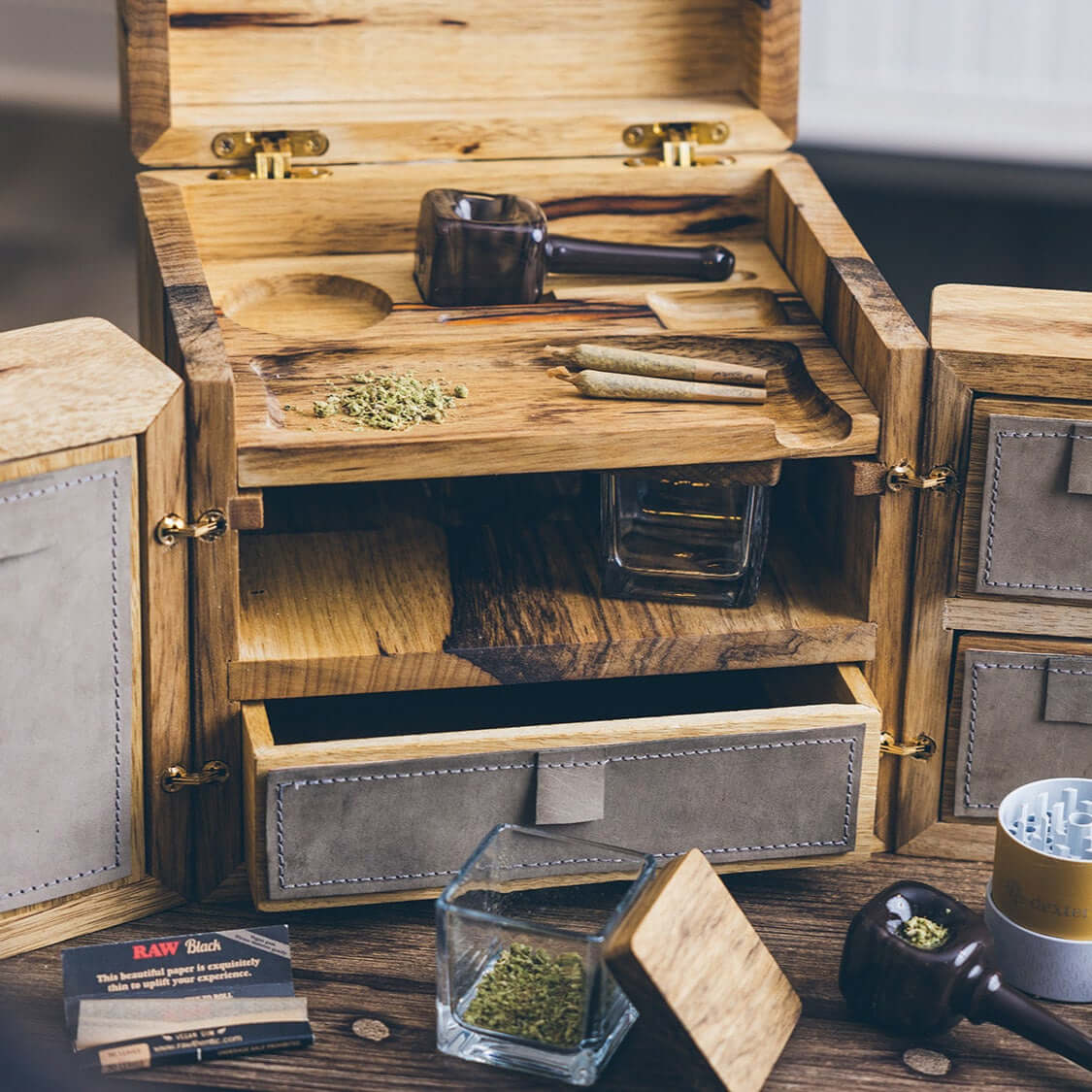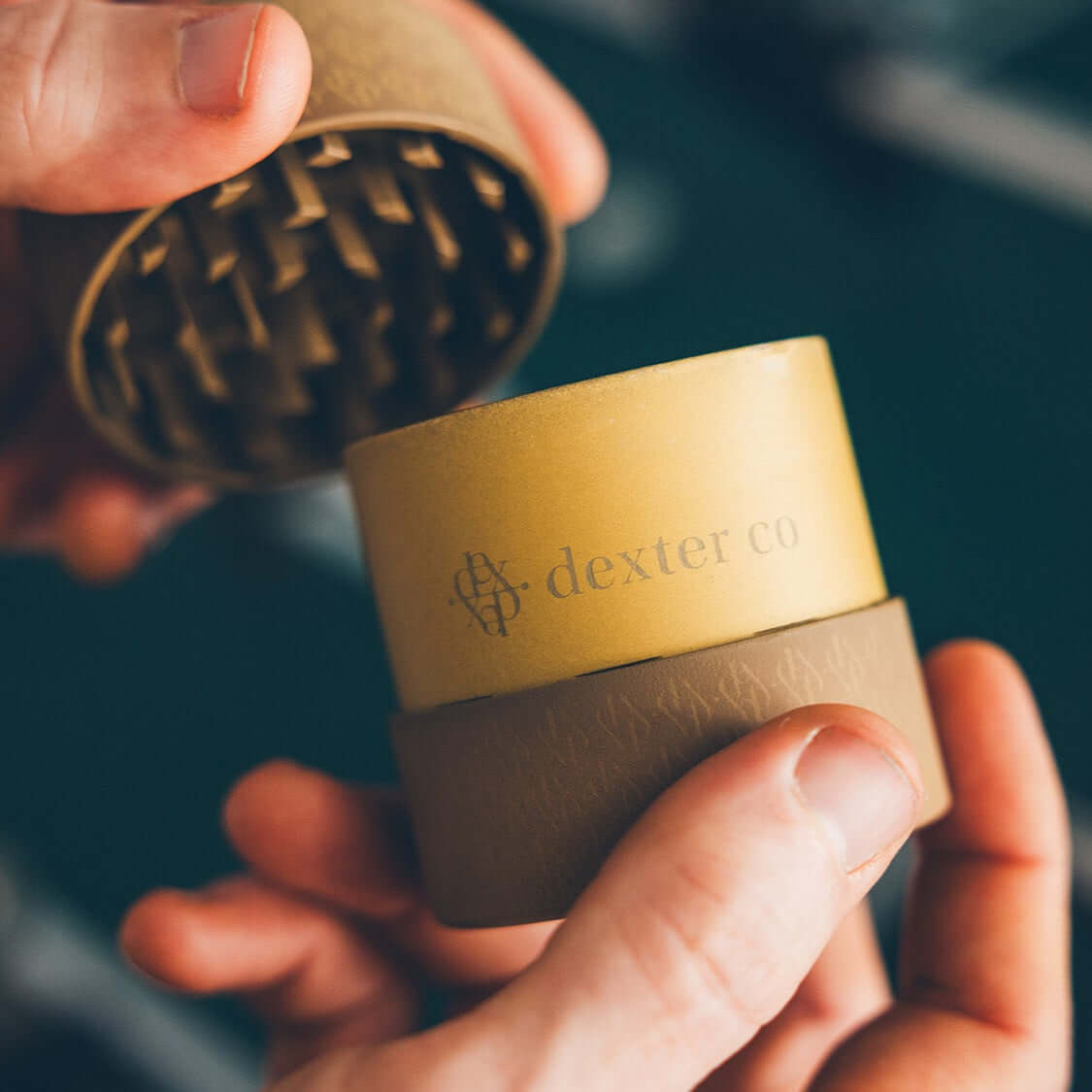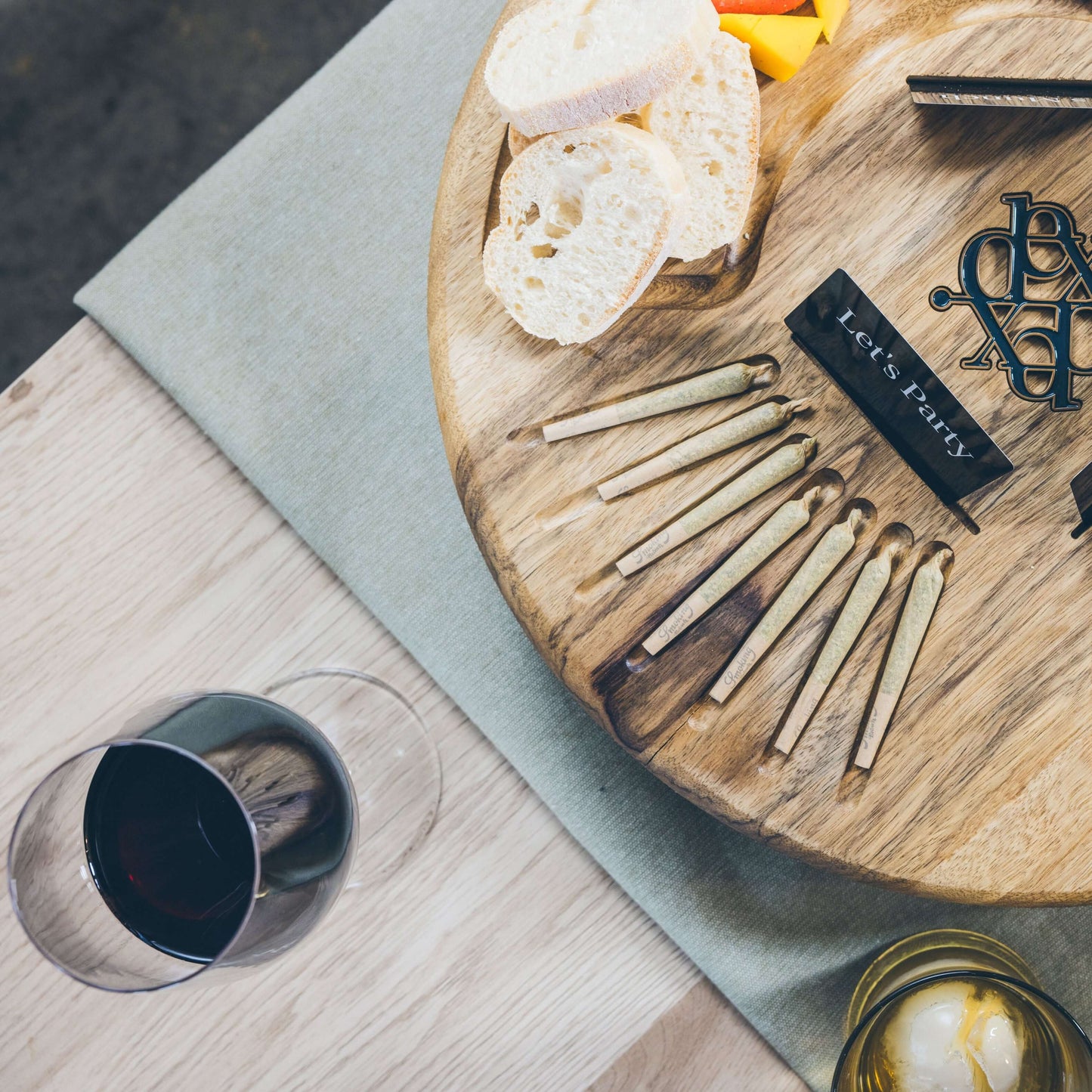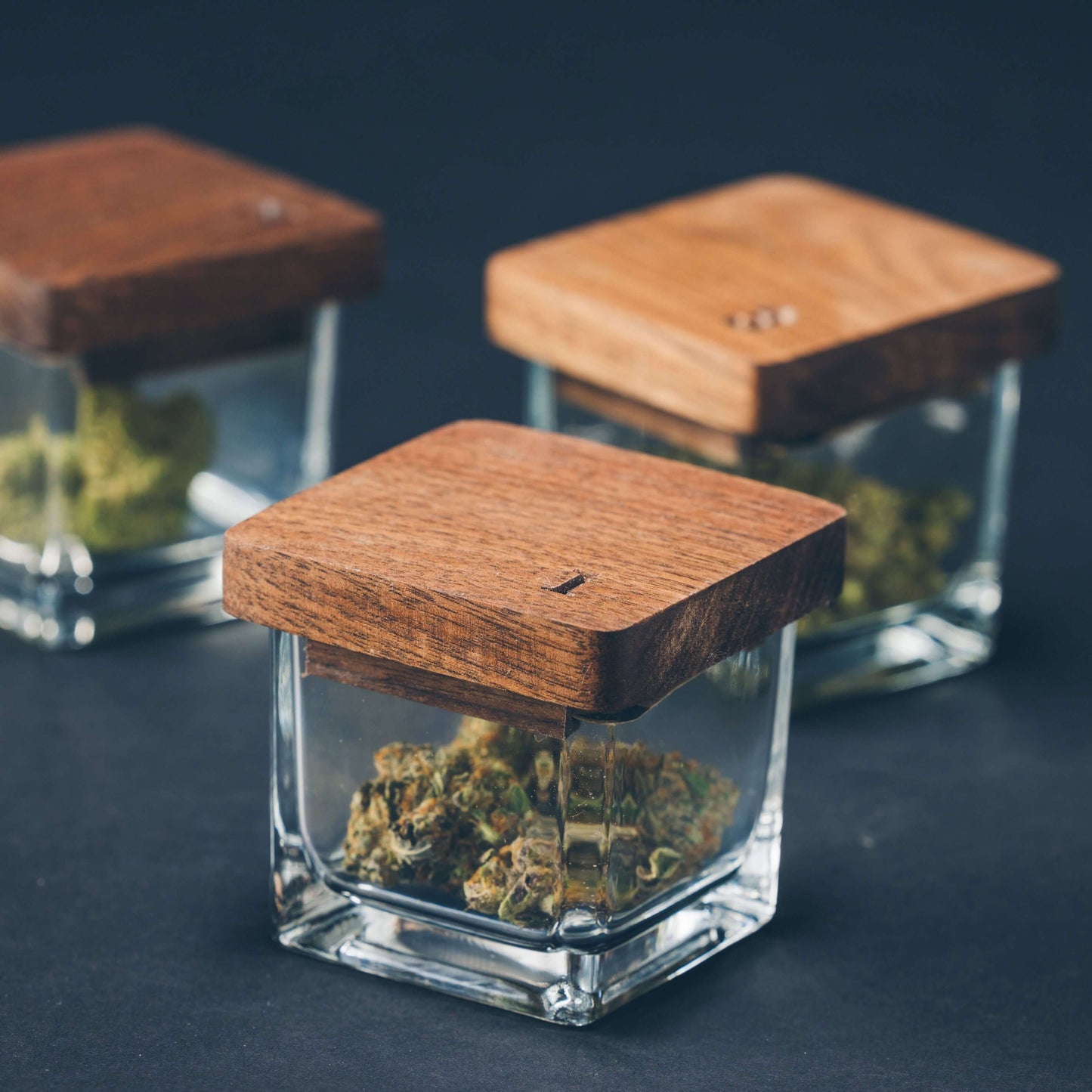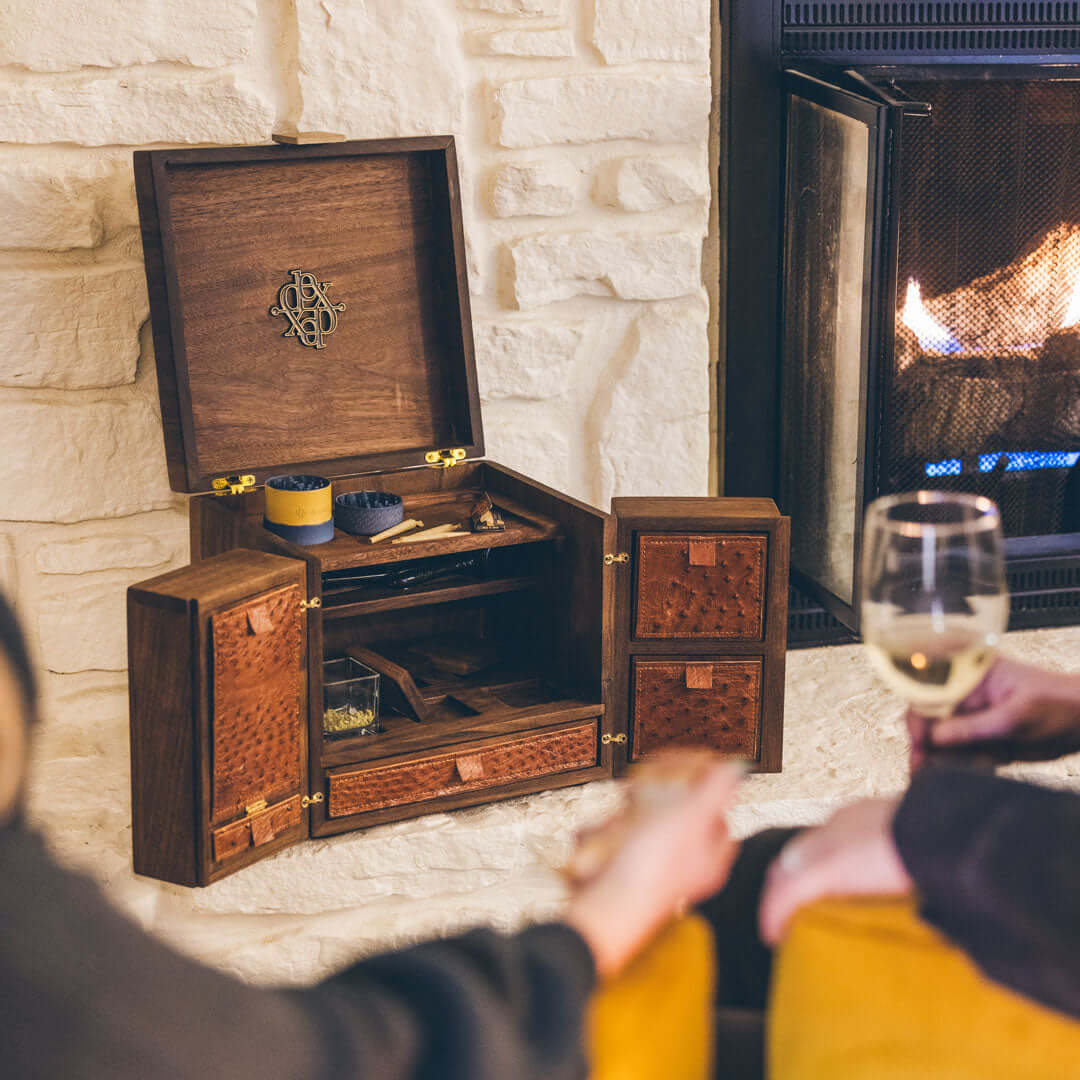
IMO No.19: My Mom: My 74-Year-Old Mother and Her Cannabis Journey
⚠️DISCLAIMER, Y’ALL:
Before we go any further, please understand:
This is a story. One woman. One body. One Midwestern woman with deep Southern roots in Texas and Arkansas—a mother with three brothers and two sons who grew up knowing how to hold her own but leads with heart, not bravado. She loves fiercely, cuts through nonsense, and is the one person in my life I can always call when things fall apart. She may not cook like a Norman Rockwell painting, but she'll have a drink with you at 74, talk a little smack during a game, and always have your back, no questions asked.
This is also not medical advice. This is not me saying “Give your meemaw a joint and call it a wellness plan.” I’m not a doctor. I’m not pretending to be a doctor. If I were a doctor, I’d still tell you to talk to your doctor before trying cannabis, especially if you’re managing other medications, conditions, or general sassiness.
Cannabis affects everybody differently. Age, weight, metabolism, tolerance, the phase of the moon—who knows. What worked for my mom might not work for your mom. Or your dad. Or your cousin Linda who says she “never inhales.”
So read this with that in mind. This is a story about possibility, not prescription.
And now that the legal department in my head is satisfied, let me tell you how my 74-year-old mother—a woman with 12+ doctors, two artificial hips, type 2 diabetes, a shaky thyroid, and a fierce love for vodka tonics, Mexican Dominos, and talking trash—became a believer in cannabis.
Aches, Pains, and the Limits of the Medicine Cabinet
Mom’s journey didn’t start with cannabis. It started with age—creaky knees, an aching back, arthritis in her hands that made opening jars feel like a gladiator sport. She wasn’t sick, just aging. But if you’ve watched a loved one get older, you know how quickly a few daily aches become a cabinet full of pills: anti-inflammatories, muscle relaxers, sleep aids, and eventually, the dreaded “just deal with it” shrug from her doctor.
She didn’t like how the meds made her feel—groggy, forgetful, dried out like a saltine cracker. She wanted to be in her life, not sedated through it.
That’s when she started asking questions.
It began with turmeric. Then fish oil. Then CBD. I brought her a balm once during a visit, and she liked how it soothed her hands without the “chemical smell.” But she kept circling back to cannabis. I slowly started talking to her about cannabis. While she’s no prude—this is a woman who lived through the '70s, after all—she grew up in a small town in northern Missouri, where the weed was ditch-level and the stigma was thick. Her only experience with cannabis was the junky stuff from the 1970s that smelled like a lawnmower bag and did little more than make you cough.
So, yes—she was reluctant, to say the least. But curious. Very curious.
Introducing Cannabis to Your Show-Me State Mother
Let me tell you: there is no cool way to introduce cannabis to a Missouri mother who lives by the mantra "Show me."
Even after the CBD balm, even after months of questions and research, I still approached it like a teenager sneaking a joint into prom. My mom isn't some wide-eyed innocent—she's a Missourian. Which means talk is cheap, and proof is everything. I made a whole presentation. I printed things out. I used words like topicals and non-psychoactive and plant-based medicine. I even threw in “approved by Harvard” for good measure (it was a stretch, but technically not a lie).
Mom sat through it like a Sunday sermon. Nodded politely. Asked smart questions.
Then she said, “So… do I need to smoke it?”
“No,” I said. “Not unless you want to.”
She made a face. “I don’t.”
Okay, no smoke. No problem. We started with a low-dose edible—something mellow and manageable. I explained onset times, duration, and what to expect. I even wrote a little schedule for her: “Try half at 7 p.m. with tea. Put on a feel-good movie. Do not watch Dateline.”
She was skeptical but game. And that night, she called me.
“Well,” she said, “my hands don’t hurt. And I think I just watched a whole movie without falling asleep.”
Pause.
“I might like this,” she added.
Relief, on Her Terms
Over the next few weeks, Mom experimented like a total pro. We tried a few different edible brands and topicals. She preferred 2.5 mg of THC with some CBD—just enough to smooth the edges. Her sleep improved. Her pain lessened. She had more energy during the day because she wasn’t tossing and turning all night. She even started trying to organize the garage for what I swear is the 40th time (and yes, I counted—she laughed too). She texted me a photo of her progress with the caption: The edibles are helping. Knees are not killing me like normal!
It wasn’t just about symptom relief. It was about agency.
See, after my parents divorced when I was about 15, my mom never remarried. She was a hardworking, penny-pinching woman who didn’t have time for frivolous things. She had bills to pay, boys to raise, and stuff to do. The kind of woman who didn’t take long baths because she had laundry to fold. But now, in retirement, with just a little more time and space, she’s starting to experiment—with something taboo, no less—and finding out for herself what works.
That kind of empowerment is a miracle in itself.
The Generational Gap—and What Bridges It
There’s this stereotype that older people are set in their ways. That they’re too conservative, too scared, too “Reefer Madness” to ever consider cannabis. But that hasn’t been my experience—not with my mom.
When she decided to go get her medical cannabis card, it changed the game.
She now cheekily calls cannabis a "miracle drug." Most of the time, she doesn’t get “high”—but every now and then, if she’s feeling adventurous, she’ll partake a little more just for fun. A big reason I’m even writing this series is because one day she asked, “How do I explain this to my friends? How do I help them with all the stuff they’re dealing with?”
She’s not out here with a TikTok channel (yet), but she’s absolutely changed minds in her circle. Her neighbor tried a balm. A friend asked about sleep gummies. Even her gambling buddy—who once thought cannabis turned you into a satanist—has since asked for “a little sample, just to see.”
It’s not rebellion. It’s connection. It’s the power of seeing someone you trust feel better, and realizing maybe this plant deserves a second look.
Lessons from My Mom, the Reluctant Advocate
My mom still doesn’t consider herself a “cannabis user.” She’s just someone who found something that works. And that, to me, is the point.
-
Curiosity is timeless.
You’re never too old to learn something new—or try something new. But the way we introduce cannabis matters. It’s not about hype. It’s about information. Respect. Support. -
Cannabis isn’t about escape.
At least not for my mom. It’s about presence. About enjoying time with her grandkids. About staying active. About not wincing every time she moves. -
Representation matters.
We don’t see many 70-somethings in cannabis ads. But we should. Because they’re trying it. They’re benefitting. And they deserve to be part of the conversation—not as a novelty, but as a legit demographic. -
Humor helps.
Mom still makes jokes about “getting stoned” and sends me texts like “do you think Willie Nelson is single?” That levity matters. It makes space for curiosity. It dismantles fear.
The Bigger Picture
I tell this story not just because I love my mom (though I do, fiercely), but because her story is common. There are thousands—maybe millions—of older adults navigating pain, sleep issues, anxiety, and general aging with few good options.
Pharmaceuticals have their place. But many older adults don’t want to add another pill. They want something gentle. Natural. Effective. And cannabis, for many, fits the bill.
But stigma still gets in the way.
We’ve spent decades demonizing this plant. We’ve told entire generations that it was dangerous, criminal, immoral. And now we expect them to just flip a switch? That takes time. Compassion. And a whole lot of personal stories to bridge the gap.
Stories like my mom’s.
A Quiet Revolution
Here’s what I know: cannabis didn’t turn my mom into a “stoner.” It didn’t make her lazy or loopy or radical. It made her feel better. It gave her back parts of her life she thought were gone. It helped her sleep, move, smile, and function—on her terms.
She’s not marching in cannabis parades or writing blog posts (though I’m sure she’ll read this one and say, “You didn’t need to tell everyone about the garage…”). But she’s part of a quiet revolution.
A revolution of grandmas with gummies. Of bridge clubs passing around balm. Of older adults asking thoughtful questions and demanding better options.
And honestly? I think that’s beautiful.
Final Thoughts
If you’re reading this and wondering whether cannabis might help someone in your life—your mom, your neighbor, your retired high school chemistry teacher—here’s my advice: start small. Stay curious. Lead with kindness.
Don’t make it weird. Don’t make it trendy. Just ask a question. Share what you’ve learned. Be there to listen and let them explore it at their own pace. And yes, definitely go back and read the CYA at the top of this piece while you’re at it.
Because sometimes, the bravest, most hopeful thing you can do at 74 is try something new.
Especially when it actually helps.
Coming Up Next…
IMO No.20: Cannabis Isn’t a Cure-All, and Happiness Takes Work
A candid reflection on how cannabis can help—but it won’t do the work for you. Happiness, peace, and balance don’t come in a gummy. They come from daily intention, and yes, a little effort. This final piece in the series zooms out to look at the bigger picture and the ongoing work of living well.

